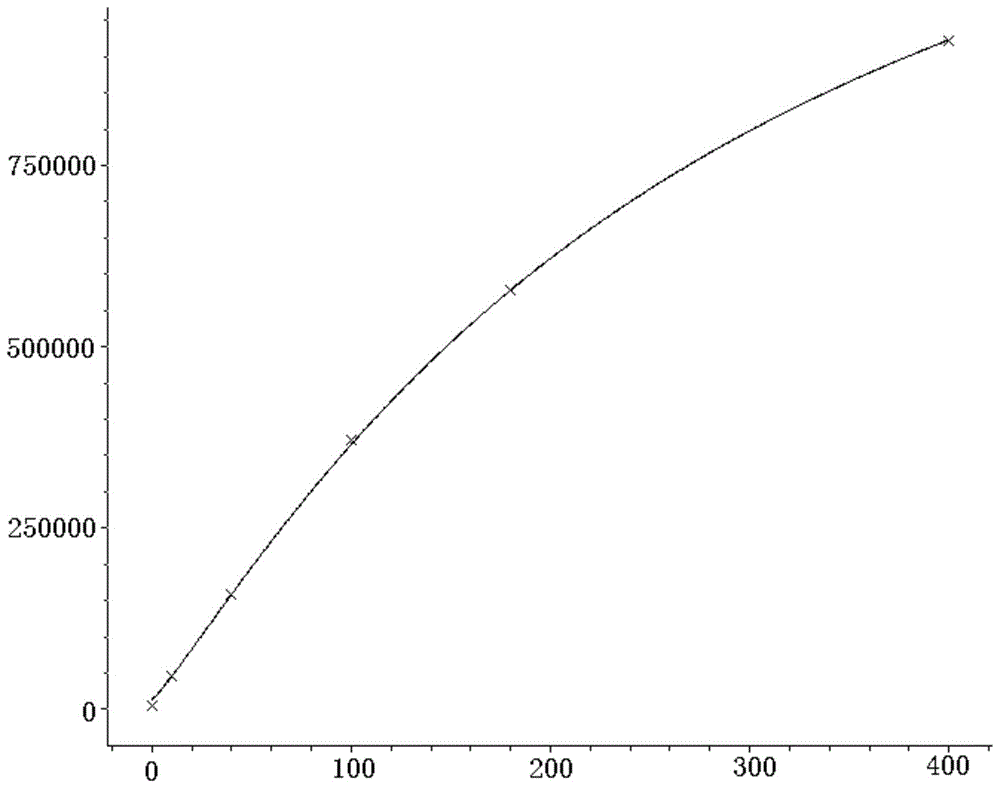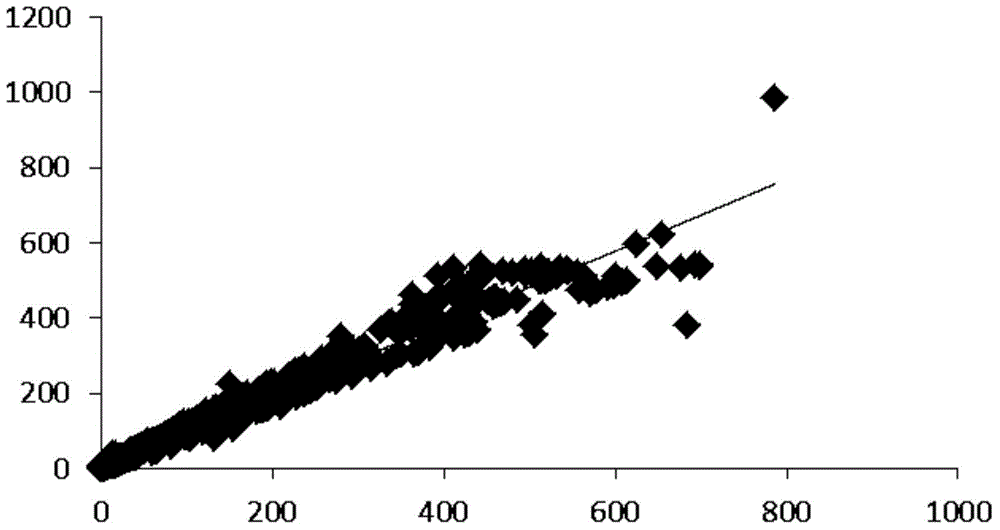Carbohydrate antigen 19-9 (CA 19-9) quantitative assay kit, preparation method and detection method thereof
A technique for the quantitative determination of carbohydrate antigens, applied in measuring devices, instruments, scientific instruments, etc., can solve the problems of unfavorable automatic detection, large economic burden of patients, unfavorable grass-roots popularization, etc., and achieve favorable signal detection and platform stability Long-lasting, easy to mix and separate effects
- Summary
- Abstract
- Description
- Claims
- Application Information
AI Technical Summary
Problems solved by technology
Method used
Image
Examples
Embodiment 1
[0052] The configuration of various buffers is as follows:
[0053] 1. Tris salt pH8.0 buffer
[0054] Tris: 12.12 mg, sodium chloride 5.82 mg, added to 1 L of purified water, stirred thoroughly until completely dissolved, and adjusted to a final pH of 8.0 with hydrochloric acid.
[0055] 2. Preparation of calibrator buffer
[0056] Add 0.01g of tetracycline and 0.1g of neomycin sulfate to 1L of neonatal bovine serum, fully dissolve and process through a 0.22 μm filter membrane to obtain.
[0057] 3. Anti-reagent buffer
[0058] Tris: 12.12mg~60.57mg, tetracycline: 0.01g~0.05g, sheep serum: 1g~5g, newborn bovine serum 3g~10g, horse serum 1g~5g, add 1L purified water, stir well until completely dissolved;
[0059] 4. Magnetic particle buffer
[0060] Tris: 12.12mg, sodium chloride 5.82mg, methyl cellulose ether 50g, add to 1L of purified water, stir well until completely dissolved.
[0061] 5. Luminescence substrate buffer
Embodiment 2
[0065] Example 2: Preparation of the Quantitative Assay Kit for Carbohydrate Antigen CA19-9
[0066] 1. Preparation of calibrators and quality controls
[0067] First: Dissolve the carbohydrate antigen CA19-9 with the standard buffer solution, and prepare the calibrator and quality control product with the target concentration as shown in Table 1;
[0068] Table 1: Preparation of calibrators and controls
[0069]
[0070] 2. The preparation method of the anti-reagent is as follows:
[0071] (1), fluorescein isothiocyanate is coupled with carbohydrate antigen CA19-9 antibody to obtain fluorescein isothiocyanate-labeled CA19-9 coated antibody:
[0072] First, fluorescein isothiocyanate is prepared into a concentration of 2.5 mg / mL fluorescein isothiocyanate solution with anti-reagent buffer, and the ratio of the mass of carbohydrate antigen CA19-9 to fluorescein isothiocyanate is 1: 1.1, transfer the two to a brown glass bottle at the same time, stir at room temperature fo...
Embodiment 3
[0084] Example 3: Steps for detecting the carbohydrate antigen CA19-9 with the carbohydrate antigen CA19-9 quantitative assay kit
[0085] The method for detecting the carbohydrate antigen CA19-9 by using the carbohydrate antigen CA19-9 quantitative assay kit includes the steps of:
[0086] (1) Take three test tubes and add 15 μL carbohydrate antigen CA19-9 calibrator, 15 μL carbohydrate antigen CA19-9 quality control, and 15 μL sample to be tested;
[0087] (2) Add 60 μL of anti-reagent to each test tube, cover the test tube with a plastic film, shake the test tube gently for 30 s, and place it in a water bath at 37°C for 15 minutes;
[0088] (3) Add 30 μL of magnetic particle reagent to each test tube, cover the test tube with plastic film, shake the test tube gently for 30 seconds, and place it in a water bath at 37°C for 5 minutes;
[0089] (4) Precipitate the test tube on the magnetic separator for 2 minutes, slowly invert the test tube and the magnetic separator, pour o...
PUM
 Login to View More
Login to View More Abstract
Description
Claims
Application Information
 Login to View More
Login to View More - R&D
- Intellectual Property
- Life Sciences
- Materials
- Tech Scout
- Unparalleled Data Quality
- Higher Quality Content
- 60% Fewer Hallucinations
Browse by: Latest US Patents, China's latest patents, Technical Efficacy Thesaurus, Application Domain, Technology Topic, Popular Technical Reports.
© 2025 PatSnap. All rights reserved.Legal|Privacy policy|Modern Slavery Act Transparency Statement|Sitemap|About US| Contact US: help@patsnap.com



